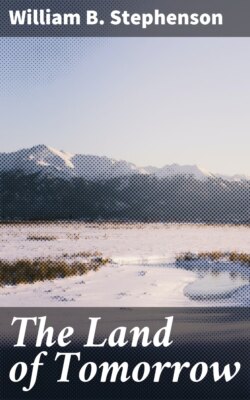Читать книгу The Land of Tomorrow - William B. Stephenson - Страница 7
На сайте Литреса книга снята с продажи.
CHAPTER III
ST. MICHAEL
ОглавлениеTable of Contents
IT is only when one ventures forth upon so large a subject that he realizes how inadequate, how incomplete the result must be even after he has done his best. He may just as well acknowledge his shortcomings in the outset and crave his readers' indulgence. It is the truth that there is no man living who can or has the right to attempt to speak of Alaska as a whole. A man might travel continuously for a whole year, using every means of expedition at his command, not wasting a day anywhere, journeying by land or sea, in winter and summer, taking advantage of the "last ice" and the "first water," and yet he could not begin to cover the country. In the far-distant corners, hidden away from the eyes of man, one will come upon the scattered missions of the various churches to reach which one must journey thousands of miles! So, whenever a man from Nome speaks of Alaska he means that part of it which he himself knows,—the Seward Peninsula. The man from Cordova, or Valdez, talks of the Prince William Sound country and calls it Alaska! The man from Juneau speaks of Alaska, but all that he means is the southeastern coast. This is why so much that is written of the country is contradictory. In fact, Alaska is not one but many countries! And the various parts differ radically from each other. Nature has separated them each from the other by obstacles almost insuperable. They have different interests, different problems. Their climate is not the same, nor their resources, nor their population. Thus what is true of one part of Alaska may be (and often is) absurdly untrue of another part.
Because much of my own experience here has centered about St. Michael and because the little island is so large a part of the country's fragmentary history I am indulging myself in the pleasure of telling her story. When the Russian-American company was under the administration of that able and high-minded official, Baron von Wrangell, Michael Trebenkoff was sent out to establish a trading-post on Norton Sound. In 1833 he built Redoubt St. Michael, putting it under the protection of his patron Archangel. It was the second Russian port on Bering Sea, Nushayak, in Bristol Bay, having been founded in 1818.
It is a quaint, historic little island, about twenty-two miles long and six miles wide. It has one mountain, an extinct volcano, in the center and is separated from the mainland by a narrow channel. The latter was utterly useless for shipping, and a few years ago the government spent quite an amount of money widening and improving it in order that, by its use, the worst part of the sea voyage from St. Michael to the Yukon river might be avoided. But it was misdirected effort. The boats do not use it because of its narrowness. The canal, at the mouth of which is a beacon, leads by a wandering course into St. Michael's Bay. I one day asked Captain Polte, an old officer of one of the vessels, why the canal was not used. "Well," he replied laconically, "we can't use it when it's windy and when there's no wind we don't need it!" Reason enough.
